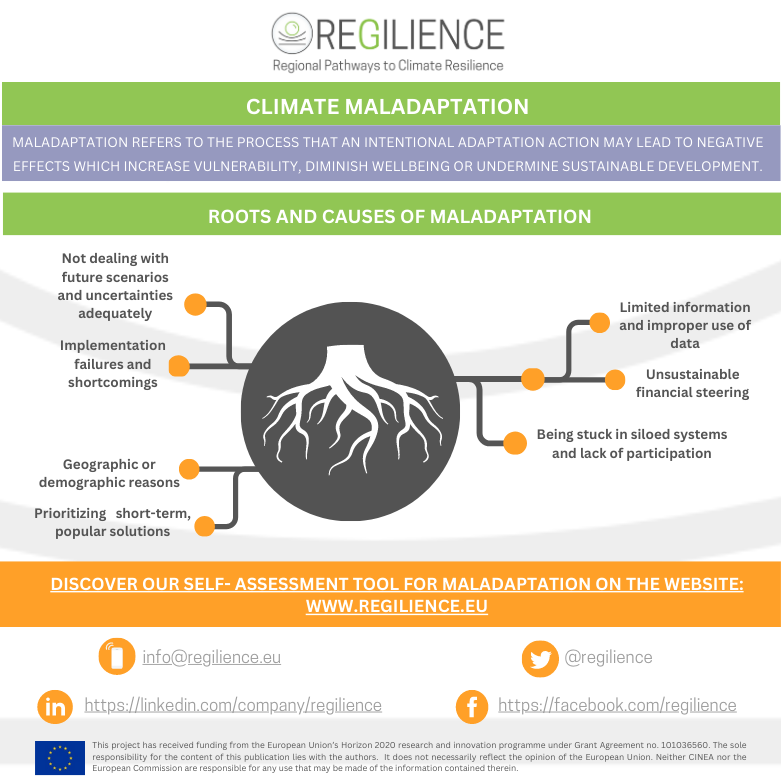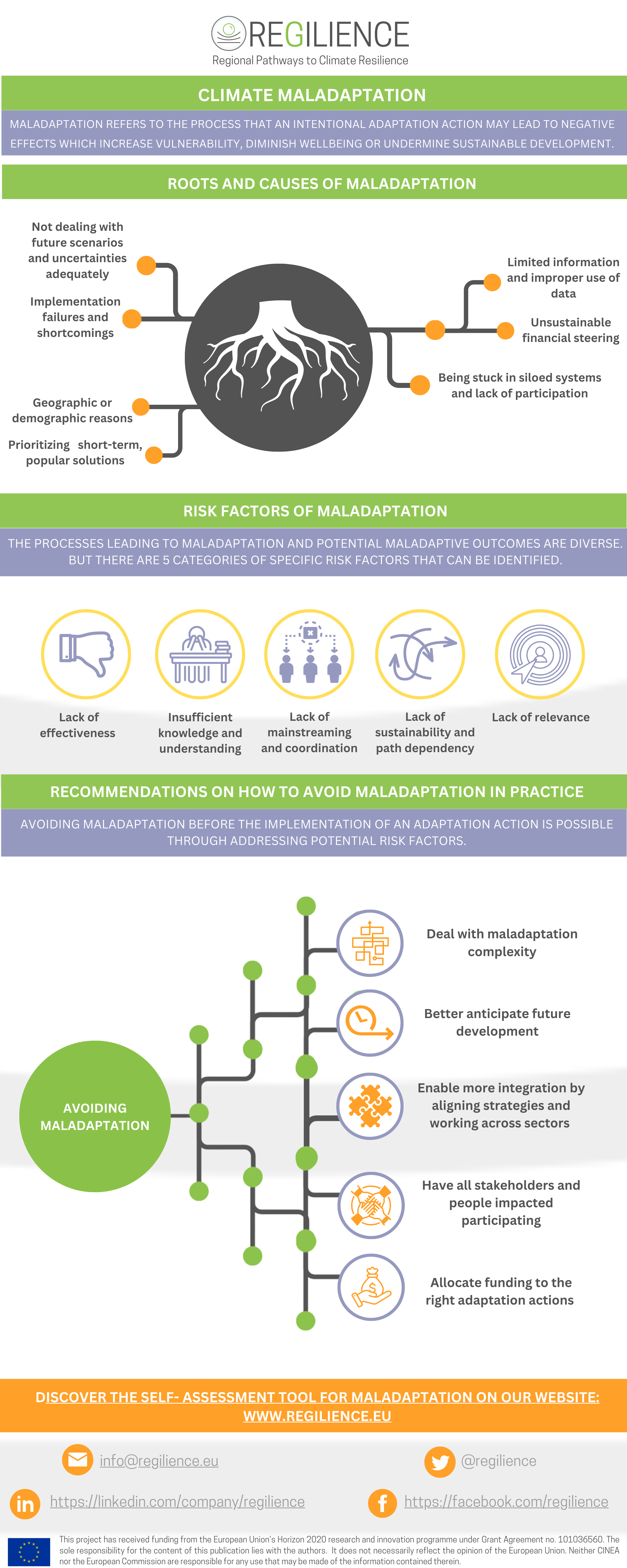
When an adaptation action or project goes wrong, the targeted adaptation situation and resilience are not strengthened, but rather worsened, leading to maladaptive outcomes. Maladaptation refers to the process that an intentional adaptation action may lead to negative effects which increase vulnerability, diminish well-being or undermine sustainable development. This can happen within the same or different regions, systems, sectors, or social groups than those targeted by the adaptation action.
To identify possible measures of maladaptation, REGILIENCE developed a tool with a self-assessment list to check adaptation actions, and spot those factors where further effort to avoid maladaptation is needed. The questions from the checklist shall be filled out in the planning phase. It can be used to avoid that adaptation actions cause increased vulnerability or harm to livelihoods, ecosystems, and the economy. By checking the risks of maladaptation, it becomes less likely for adaptation actions to cause increased vulnerability or harm to livelihoods, ecosystems, and the economy. It is useful to look at the risks of maladaptation to detect the risks early on in the planning phase of an adaptation action and once identified, the risks can be reduced. Also, understanding potential risks can raise general awareness of maladaptation.
The tool is mainly designed for people or institutions who are in charge of planning and implementing regional adaptation projects or actions, but it can also be applied in a wide range of contexts. Most adaptation actions are fostered by the public sector, but the importance of the private sector and community organisations in adaptation is growing, and we, therefore, encourage decision-makers on all levels to use the tool to spot potential maladaptation risks.
Adaptation to current and future impacts of climate change is urgently needed, but should not be done unplanned or rushed in order to avoid adaptation actions turning into maladaptive outcomes.
We hope that this self-assessment tool for maladaptation will be found useful to spot maladaptation risks early on in your plans!
To further develop this tool, we would like to ask for your feedback and experience using it.
The infographic below summarises the root and causes, risk factors for maladaptation, and recommendations on how to avoid it:
